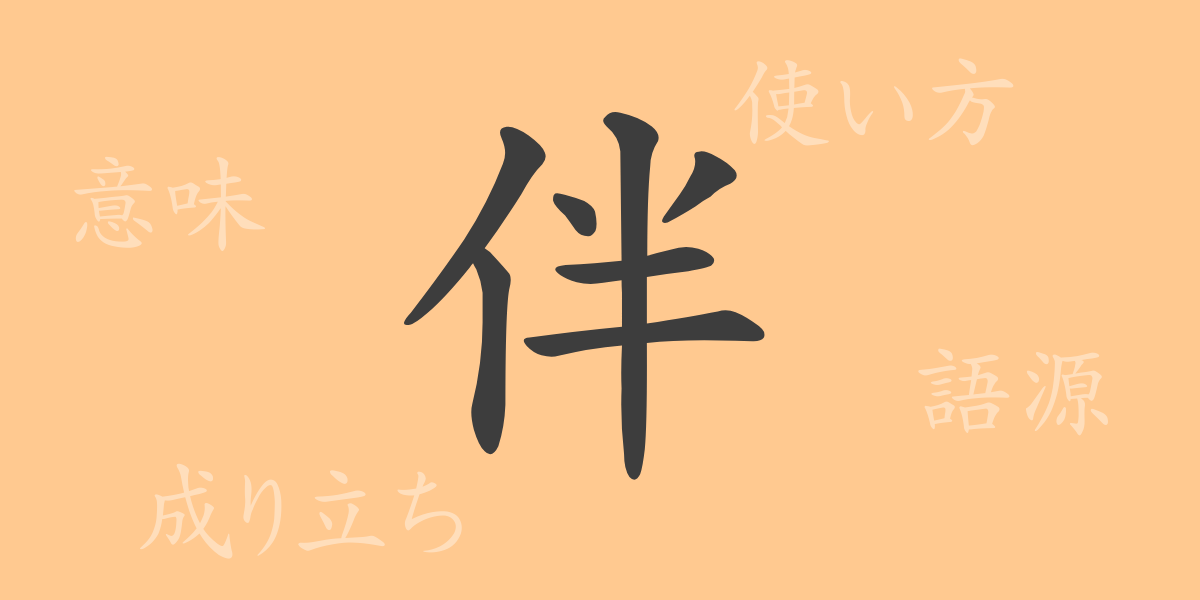The richness of the Japanese language is significantly shaped by its kanji culture. Among the commonly used kanji, “伴” (ハン, ともなう, ともに) is a vital character often used in everyday life. This article will unravel the origins, meanings, usages, and phrases related to “伴”, aiding readers in deepening their understanding and mastery of this kanji.
Origins of 伴 (ハン, ともなう, ともに)
The kanji “伴” originated from oracle bone script in ancient China. Initially related to the kanji “半” (はん), which signifies division into two, it evolved to mean accompanying or being together. Over time, “伴” has become symbolic of people acting together.
Meaning and Usage of 伴 (ハン, ともなう, ともに)
“伴” signifies accompanying someone or something. It is used in words such as “同伴” (どうはん, accompanying) and “伴奏” (ばんそう, accompaniment) to express the nuances of going together, adding, or escorting. Metaphorically, it is also used to describe one event bringing along another, as in “苦楽を伴う” (くらくをともなう, involve both joys and hardships).
Pronunciation, Stroke Count, and Radical of 伴 (ハン, ともなう, ともに)
Basic information about the kanji “伴” is as follows:
- Pronunciation: The on-reading is “ハン” (ハン), and the kun-readings are “ともなう” (ともなう) and “ともに” (ともに).
- Stroke Count: 10 strokes.
- Radical: 亻(にんべん, person radical).
Phrases and Idioms Using 伴 (ハン, ともなう, ともに) and Their Meanings
There are numerous phrases and idioms that include “伴”, each with its unique implications:
- 同伴 (どうはん): Accompanying someone. Example: “Attending the party with a friend.”
- 伴奏 (ばんそう): In music, playing an accompaniment to the main melody. Example: “Playing piano accompaniment for a song.”
- 伴侶 (はんりょ): A life partner. Example: “He found his ideal partner.”
- 苦楽を共にする (くらくをともにする): Sharing joys and sorrows together. Example: “A married couple shares both good times and bad.”
Summary on 伴 (ハン, ともなう, ともに)
The kanji “伴” is ideally suited to express the concept of being together with others. It is used in a variety of settings from casual conversation to business contexts and even to describe profound human relationships. Through this article, you have gained an understanding of the background and application of “伴”, enriching your expression in Japanese. Kanji like “伴” carry values beyond mere characters, playing a crucial role in conveying culture and history. We hope you continue to enjoy the depth of language through kanji like “伴”.

























